 Amid the backdrop of the largest cut to food assistance in our nation’s history, Food Bank staff, Food Policy and Advocacy Coalition (Food PAC) members, and their loved ones came together on July 11 to celebrate the graduation of our inaugural Food PAC cohort.
Amid the backdrop of the largest cut to food assistance in our nation’s history, Food Bank staff, Food Policy and Advocacy Coalition (Food PAC) members, and their loved ones came together on July 11 to celebrate the graduation of our inaugural Food PAC cohort.
“This has been a transformative chapter,” said Policy & Advocacy Manager Alex Raffanti. “You are not just the first cohort. You are the standard, the example, and the beginning of something very, very powerful.”
Over 18 months, Food PAC members sharpened their skills in advocacy and public speaking, and learned the ins and outs of policymaking. Drawing on their lived experience of hunger, members helped shape the questions in our Policy Survey, which directly informed the Food Bank’s 2025 Policy Agenda. This hard work culminated in a trip to Sacramento for California Hunger Action Day, where they met with legislators to advocate for policies on behalf of their neighbors.
“When we went to Sacramento, that was such an eye-opener for me,” said Glen, a Food PAC graduate. “To actually go and speak before a representative and push for something that everybody is going to benefit from, that’s outstanding. We have a voice, and I didn’t realize that… Those people listen. They are paying attention. And I think the more we put effort into that, the more is going to come out of it.”
Sizi, another graduate, emphasized the importance of creating space for people who have experienced hunger to be involved in policy decisions.
“I’m super grateful for the opportunity to have a seat at the table,” she said. “Sometimes it’s tough for community members to really engage in advocacy work because of the situations we’re living through. That’s due to the systems that are in place, unfortunately. But as we engage more, I think that’s where we find the strength to really persevere.”
Sizi also shared powerful reminder of why food banks matter, why the Food PAC’s work matters, and who this is for.
“That’s where we get our food,” she said. “That’s where my grandma gets her food. My aunts, my cousins. So, thank you to the Food Bank for partnering with organizations that are providing healthy fruits and vegetables for our kids and for our seniors.”
Greer spoke about how the Food PAC helped her find a sense of purpose and connection.
“Joining the Food PAC has made such a difference in my life,” she said. “To build this community and be able to tell my story has just been life-changing for me.”
She added, “I have enjoyed every mile that it’s taken to drive out here. And meeting everyone and developing relationships with people has just been great.”
Before handing out certificates, Assemblymember Damon Connolly, who represents District 12 in Marin, encouraged the graduates to keep going.
“As someone who serves in Sacramento on your behalf, I can tell you that real change happens when members of the public show up, by calling, emailing, attending committee hearings, and meeting with legislators.,” he said. “Sharing your perspectives helps us make the case not just here in the Bay Area, but across the state.”
We’re so proud of this cohort and excited to see how they continue to lead and inspire.
We’re currently accepting applicants for the next cohort!
If you’re passionate about making a difference (especially if you’ve experienced food insecurity), apply now! You’ll learn advocacy skills and contribute to policy change – no prior experience needed. We require a 12-month commitment, with about 5 hours of work per month. You’ll need to speak English (reading and writing can be developed) and will be compensated $100/month.



 The timing couldn’t be more critical. Since the pantry opened in late January, the neighborhood’s
The timing couldn’t be more critical. Since the pantry opened in late January, the neighborhood’s  For many, including a resident named John, opening day was their first time visiting a food pantry. John moved to San Francisco from Kenya in December and discovered the pantry through senior education classes at the YMCA. Now living with his daughter and two grandchildren, he says it’s already making a difference in helping his family afford groceries. “The bills, the cost of living — it goes down,” he says, relieved that the family has one less burden. John says he’s thankful to bring home fresh, healthy food without the stress of rising prices.
For many, including a resident named John, opening day was their first time visiting a food pantry. John moved to San Francisco from Kenya in December and discovered the pantry through senior education classes at the YMCA. Now living with his daughter and two grandchildren, he says it’s already making a difference in helping his family afford groceries. “The bills, the cost of living — it goes down,” he says, relieved that the family has one less burden. John says he’s thankful to bring home fresh, healthy food without the stress of rising prices.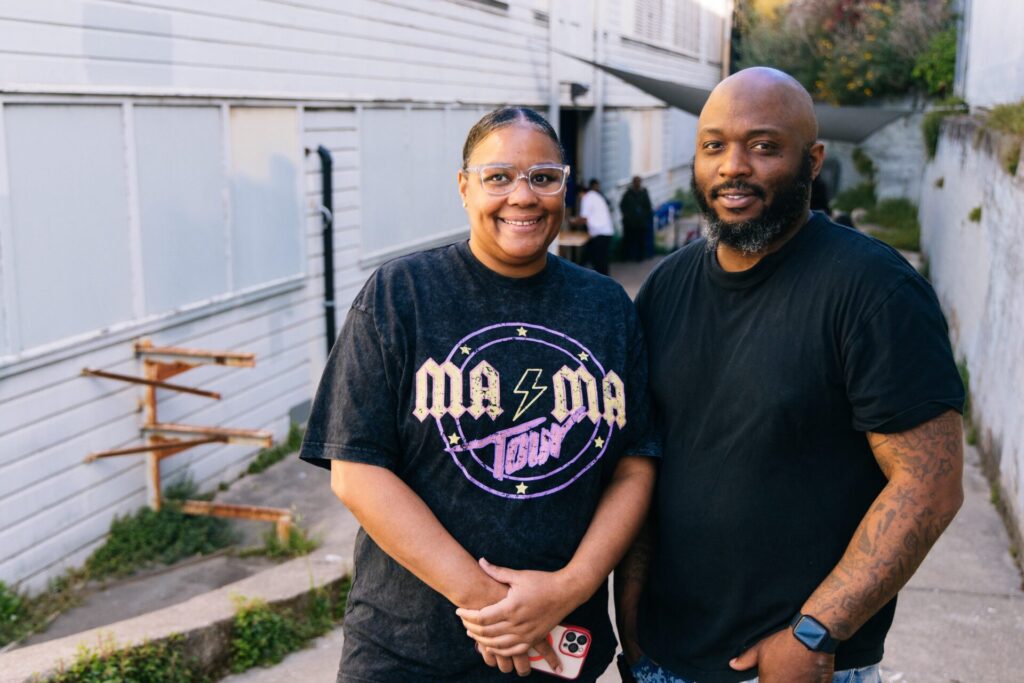
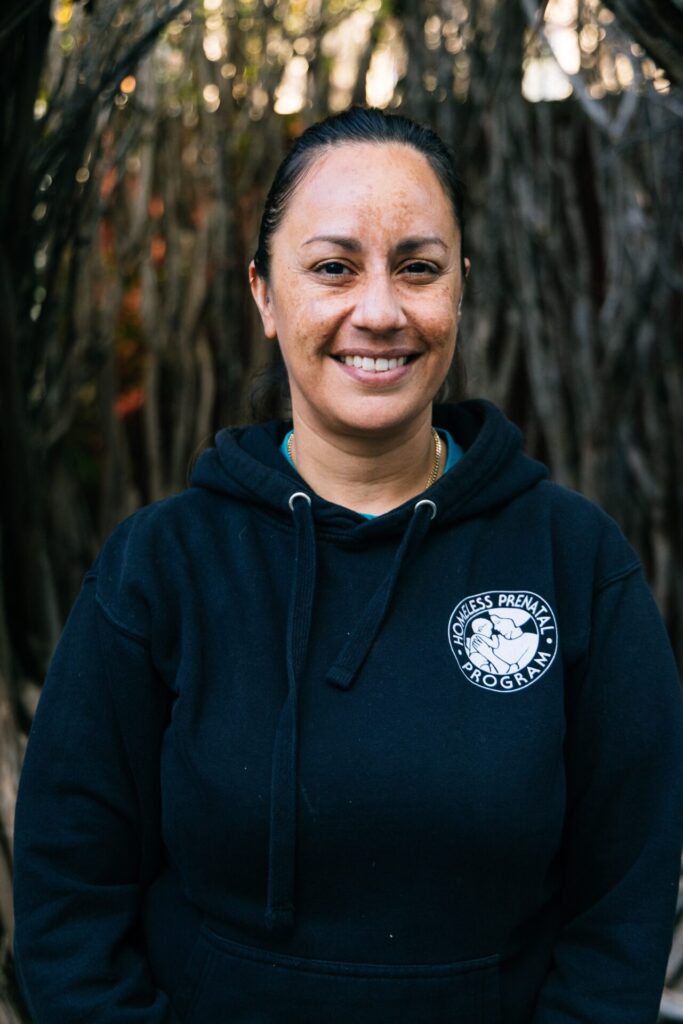
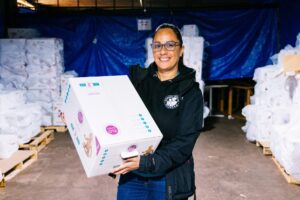 benefits. For families with young children, the cost of diapers adds up quickly. Too often, parents are forced to choose between diapers and food. That’s where CalFresh, the Food Bank, and community partners like Homeless Prenatal Program (HPP) come together. The San Francisco Diaper Bank, a partnership between the SF Human Services Agency and family resource centers like Homeless Prenatal Program, offers a free monthly supply of diapers to CalFresh families with children under two. At HPP, a long-standing Food Bank partner, families can pick up diapers and healthy groceries in one stop. It’s a model of seamless support that strengthens the safety net and addresses the root causes of hunger.
benefits. For families with young children, the cost of diapers adds up quickly. Too often, parents are forced to choose between diapers and food. That’s where CalFresh, the Food Bank, and community partners like Homeless Prenatal Program (HPP) come together. The San Francisco Diaper Bank, a partnership between the SF Human Services Agency and family resource centers like Homeless Prenatal Program, offers a free monthly supply of diapers to CalFresh families with children under two. At HPP, a long-standing Food Bank partner, families can pick up diapers and healthy groceries in one stop. It’s a model of seamless support that strengthens the safety net and addresses the root causes of hunger.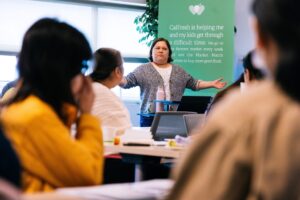 One way we strengthen the region’s CalFresh outreach is by providing training opportunities for our partners who make expanding CalFresh enrollment possible.
One way we strengthen the region’s CalFresh outreach is by providing training opportunities for our partners who make expanding CalFresh enrollment possible.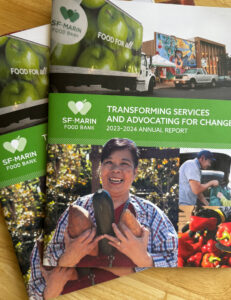 Jean Baker has a joyful smile and ebullient spirit, and both seem to shine prominently on the cover page of the Food Bank’s 2023-24 Annual Report. Now retired, and focused on family and her faith, for years Jean served as a steadfast connection between the Food Bank and participants who came to a food pantry at her church in the Mission District in San Francisco.
Jean Baker has a joyful smile and ebullient spirit, and both seem to shine prominently on the cover page of the Food Bank’s 2023-24 Annual Report. Now retired, and focused on family and her faith, for years Jean served as a steadfast connection between the Food Bank and participants who came to a food pantry at her church in the Mission District in San Francisco.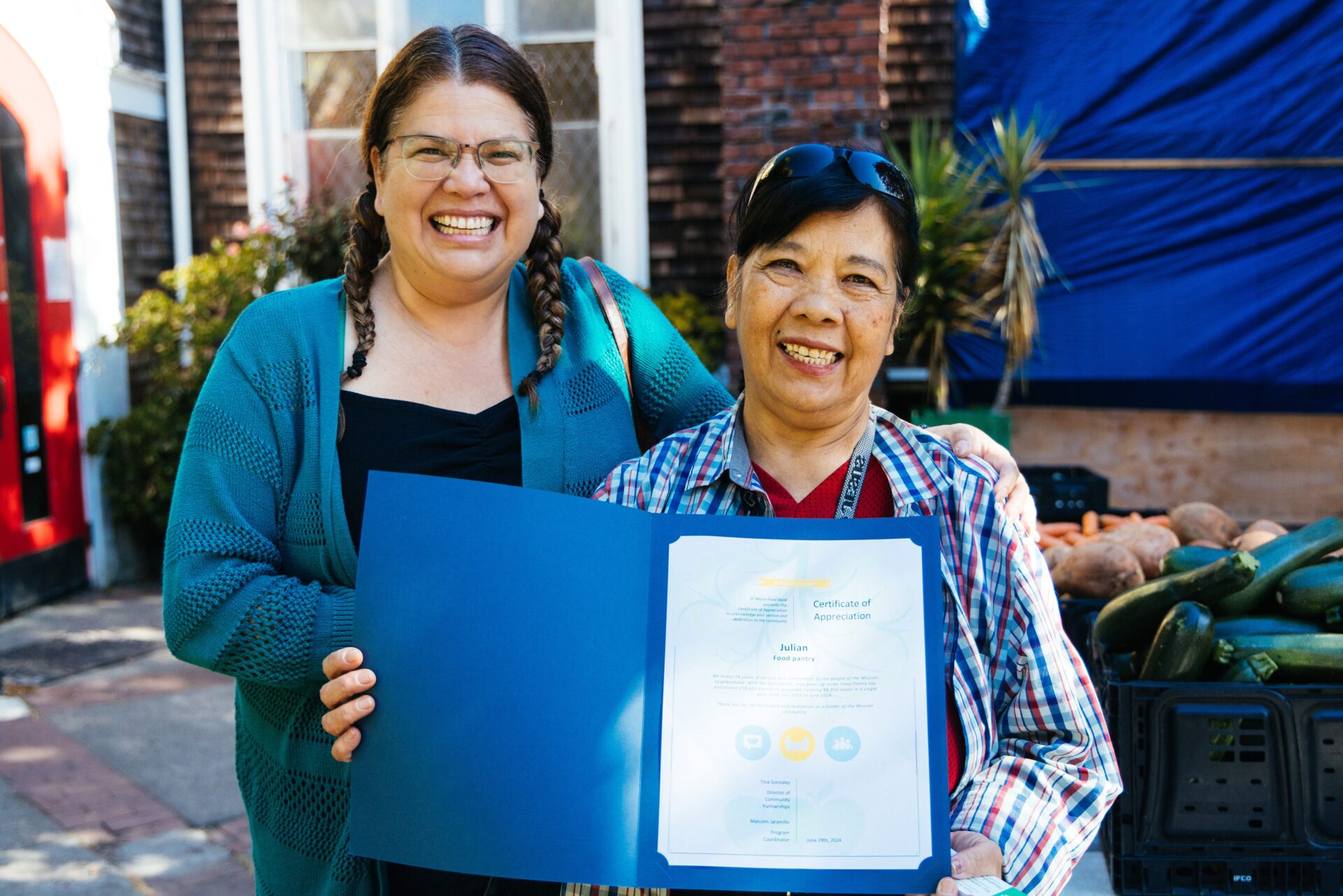
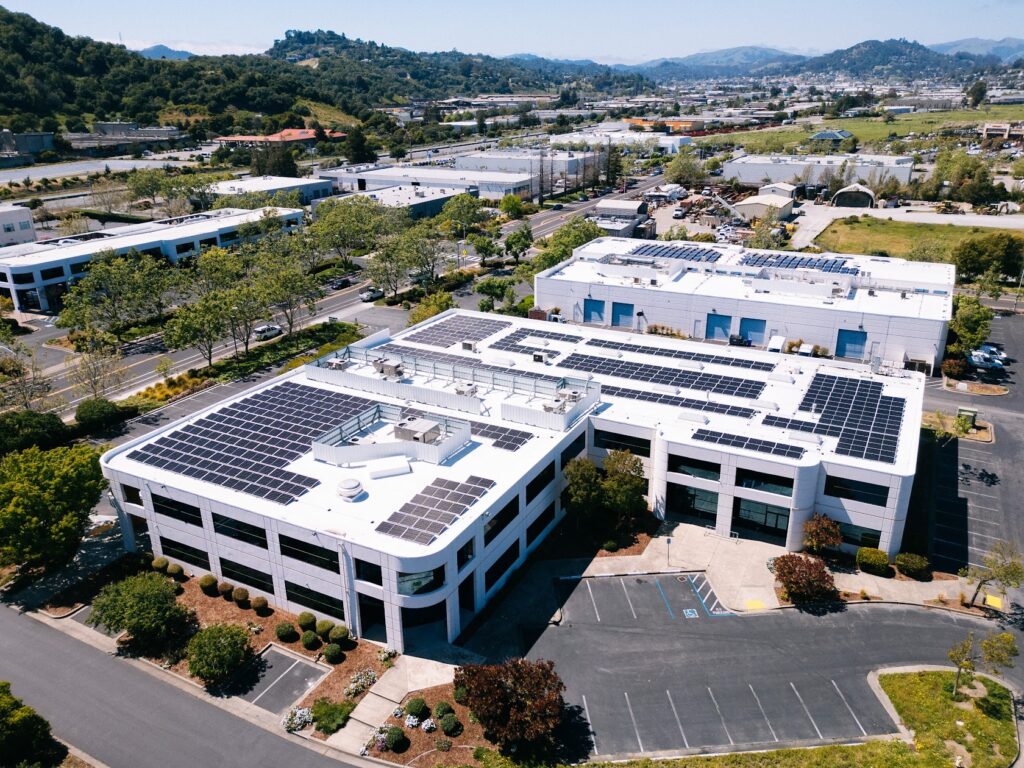 At the Food Bank, we know that access to healthy nutritious food is deeply connected to the climate crisis. If we want to build a food-secure future, we have to protect the environment we all depend on to grow the fruits, vegetables, and grains that nourish our communities. That’s why making big investments in sustainability is so important for our Food Bank.
At the Food Bank, we know that access to healthy nutritious food is deeply connected to the climate crisis. If we want to build a food-secure future, we have to protect the environment we all depend on to grow the fruits, vegetables, and grains that nourish our communities. That’s why making big investments in sustainability is so important for our Food Bank.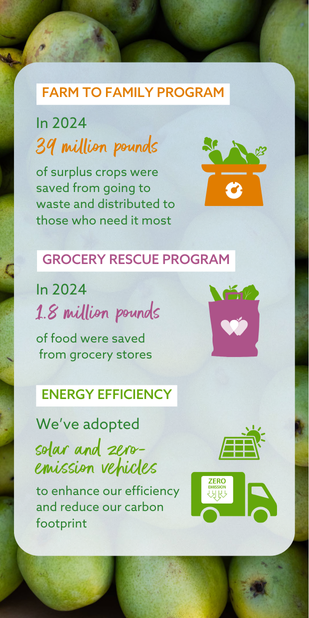
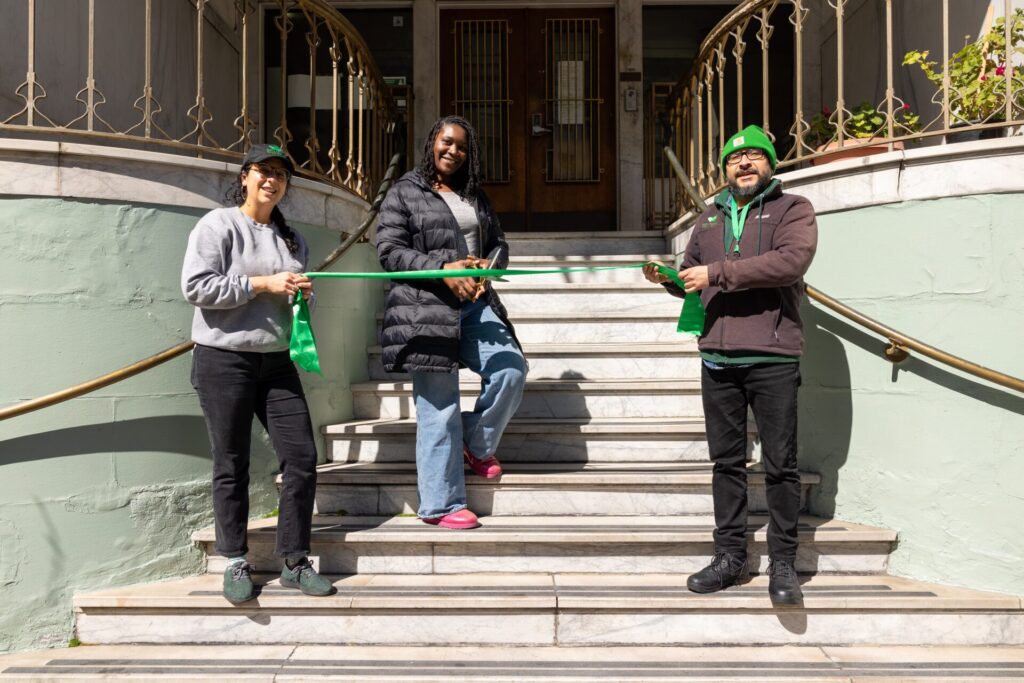 At the Food Bank, we know that food insecurity doesn’t happen by chance. It’s the result of deeper issues like poverty, housing insecurity, and systemic inequality. That’s why we’re proud to partner with Mary Elizabeth Inn, an organization that knows it takes more than meals to create lasting change.
At the Food Bank, we know that food insecurity doesn’t happen by chance. It’s the result of deeper issues like poverty, housing insecurity, and systemic inequality. That’s why we’re proud to partner with Mary Elizabeth Inn, an organization that knows it takes more than meals to create lasting change.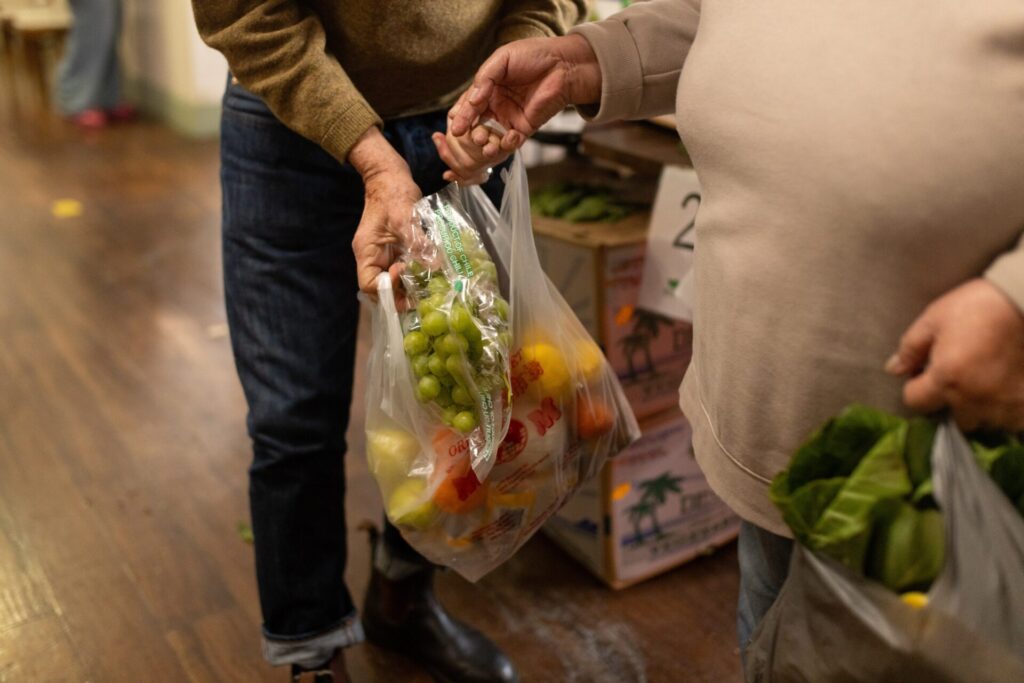 best part about the pantry is that we can tell them where the food is coming from,” said Ebony. “It’s farm fresh, and it’s not going to expire tomorrow. Tables and tables full of vegetables, protein, milk, and more. Way better.”
best part about the pantry is that we can tell them where the food is coming from,” said Ebony. “It’s farm fresh, and it’s not going to expire tomorrow. Tables and tables full of vegetables, protein, milk, and more. Way better.” “[We want] to make organic food from small and medium farms not a luxury, but something widely accessible,” says Veronica. “Our model is designed to take that step back from the final consumer, connecting small farms to institutions like the Food Bank to broaden access to fresh, local food.”
“[We want] to make organic food from small and medium farms not a luxury, but something widely accessible,” says Veronica. “Our model is designed to take that step back from the final consumer, connecting small farms to institutions like the Food Bank to broaden access to fresh, local food.”
Share